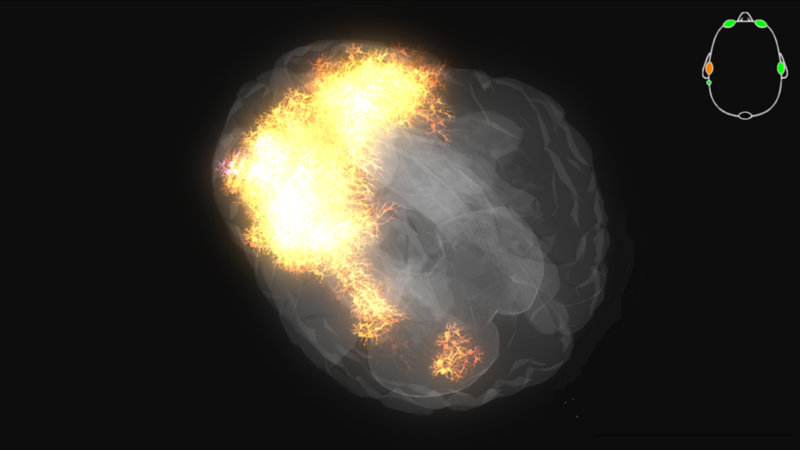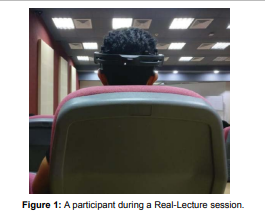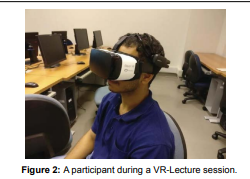Learning, Knowledge and Human Development MOOC’s Updates
Implications of using EEG readings in modification of the classroom environment.
Contemporary research in neuroscience:
As the field of neuroscience is growing it is bringing with it information regarding the brain that can help in not only medical sciences but also have an important and noteworthy impact on the social sciences and the understanding of human behavior. Not surprisingly then, the field of neuroscience is now become more popular by the minute and also more crucial.
Recently there have been many researchers who have focused on cognition for better understanding of the learning process. The aim of those researches being the advancement of the education system as in making it more efficient and cater the needs of students with diverse and unique potentials without stamping down their creativity and uniqueness. Many researchers thus have focused on key topics like cognitive processes taking place within the brain of a learner while he/she is involved in any task. (Grabner et al., 2009; Yoncheva et al., 2010).
Neuroimaging techniques and other such tools used for the study of the brain’s neural activity detect motion and blood flow in active parts within the brain during a predetermined task’s completion. In this why scientists argue that the portion of brain having increased blood flow is responsible for whatever task is being done at that time. (e.g., Prat & Just, 2011) This gives us a pretty accurate picture of the areas responsible for tasks like learning or memorizing etc but the technology is not infallible enough since their happens a lot of “noise” during such experiments and the room for error needs to be given.
Significance of neuroscientific research:
Uptill now research has effectively shown fMRI and EEG results exploring cognitive processes of students in Verbal Reasoning. (e.g., Henderson, Choi, Lowder, & Ferreira, 2016). Student engagement level has also turned out to be a measurable construct. (Ansari & Coch, 2006) Students engagement and emotional response to a particular way of instruction can thus provide information regarding interest and motivation level of the student which would then effect his/her learning.
Hadi and his collegues recently conducted a research in Bahrain on measuring the level of student involvement during virtual environment v/s classroom setting lecture method. They used EEG signals taken straight from the students’ brains to record their emotional state and engagement during the lecture in both traditional and VR methods of teaching. They used standard tools for their statistical analysis of the data e.g. the fine K-Nearest Neighbor (KNN) algorithm was used to recognize emotions.
Anatomy and Physiology students were taken as participants and their EEG tested during the course session which was Five minutes long. Each student was given three sessions to minimize the error bracket and validate the results. On the basis of the data analyzed the positive emotions were seen to be better in a traditional lecture than in a VR-Lecture, eventhough the engagement percentage in both classes was found to be approximately the same.
Applications and Benefits of Neuroscientific Research;
This research study shows us that the affective and cognitive functioning of a student during class can be assessed and this can lead to more efficient ways of instruction along with giving more control to the students in deciding what sort of instruction method works best for them. The goal of the education system being the improvement and polishing of the skills of all the students regardless of their intellectual level, can be achieved with the help of such scientific data.
Students when given the chance to actively construct their learning environment not only on the latent level as per the views on Piaget but also in the manifest level where they are aware of their decisions. Such self awareness on the part of the student can do no harm but a lot of good leading towards maturity of thought and enhancing decision making abilities. Such techniques may help students to go on their own pace and learn in an environment that is most suited and acceptable to them. Thus, producing a student controlled environment and giving license and space to individual uniqueness (as emphasized by Piaget’s ideas) to flourish.
With the advancement of technology and the availability of wearable EEG recording devices this task has become even more easier to conduct. With the help of such devises now the level of cortisol is being decreased effectively in students through certain processes such as playing classical music etc. as a response to EEG reading indicating high levels of stress. If such technology gets used in the classroom it would make learning fun, interesting and the students efficient learners and motivated.
For a better understanding about how an EEG test is conducted kindly find below examples of clients going through the test. eventhough the technology has increased alot and more wearable EEG devices are available than the one in the video, it still gives us an insight into the process behind EEG even if its not being specifically used for educational purpose.
References;
Alwedaie SA, Khabbaz HA, Hadi SR, Al-Hakim R (2018) EEG-Based Analysis for Learning through Virtual Reality Environment. J Biosens Bioelectron 9: 249. doi: 10.4172/2155-6210.1000249
Ansari D & Coch D. (2006 April). Bridges over troubled waters: education and cognitive neuroscience. Trends in Cognitive Science. Vol 10 (4), pp: 146-51.
Grabne, R.H, Ansari, D, Koschutnig, K, Reishofer, G, Ebner, F and Neuper C. (2009 Jan). To retrieve or to calculate? Left angular gyrus mediates the retrieval of arithmetic facts during problem solving. Neuropsychologia, 47(2), pp:604-8. doi: 10.1016/j.neuropsychologia.2008.10.013
Henderson JM, Choi W, Lowder MW & Ferreira F. (2016 May). Language structure in the brain: A fixation-related fMRI study of syntactic surprisal in reading. Neuroimage. Vol 15 (132) pp:293-300.doi: 10.1016/j.neuroimage.2016.02.050.
Ng, Betsy& Ong, Aloysius K. K. (September 2018). Neuroscience and digital learning environment in universities: What do current research tell us? Journal of the Scholarship of Teaching and Learning, Vol. 18, No. 3
Prat, C. S. & Just, M. A. (2011). Exploring the cortical dynamics underpinning individual differences in sentence comprehension. Cerebral Cortex, Vol 21, pp: 1747-1760.





